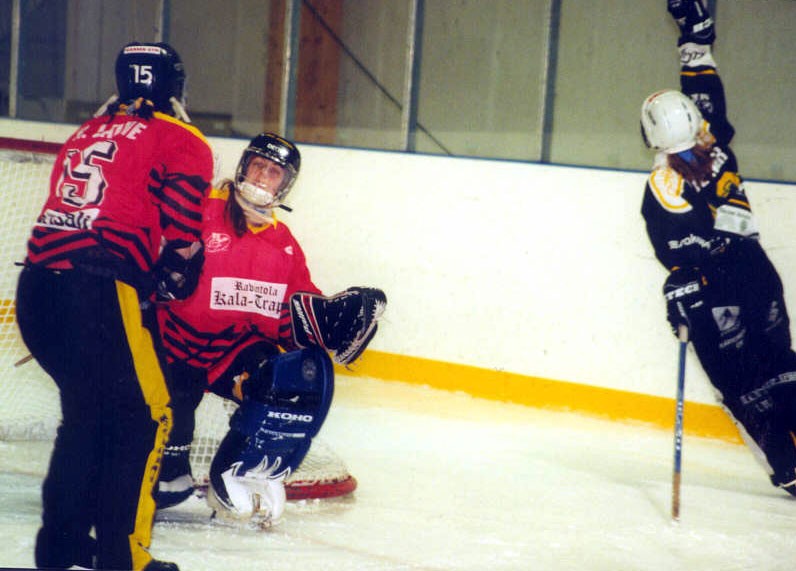By Lisa Brown
It’s called screening the goalie.
You create a screen when your player stands in front of the other team’s goalie so she can’t see the shot.
I’ll bet you’ve heard of it. BUT: I’ll also bet you aren’t using it as often as you could be.
Even my team’s goalies are forever saying to us: Get someone in front of the other team’s net… I hate being screened!
In fact, one of the best times to use a screen is when you’ve come up against a hot goalie that has your ringette team’s number. Getting some traffic in front of her might be that little something extra you need to open the floodgates.
Here’s what you need to know about screens:
- Screens are only legal in ringette if you are facing AWAY from the goalie.
- The best screens are timed. This means that you arrive in front of the net just before your teammate shoots.
- Your ringette team’s offence will be most effective when your three offensive players are constantly a threat. That means no single player should remain in the slot for a long time.
Skate into the middle, set a screen, and skate out again (rather than skating into the middle and staying planted there for 30 seconds).
Screens are terrifically effective, and you can use them right away to your advantage.
How to defend against a screen:
I called my Canadian Ringette teammate Leanne Fedor, a National Ringette goalie, to get her advice on this one. She said:
As a goalie you want to make sure that you get into a position where you can see the shooter. If that means getting really low, or moving your head to the side, do it… do WHATEVER you need to do.
Goalies have an overwhelming tendency to back up when they are faced with a screen because it’s the easiest way to see around something.
This is the worst thing you can do.
It opens up your whole net and you are literally a sitting duck. If you are a goalie, you will need to REPEATEDLY practice getting in a position to see the shooter while still pushing out and challenging in their net.
If you play defense, make sure you stay off the crease. The closer you are to the crease, the harder it is for your goalie to see around you too.
Light it up out there!
Your friend,
Lisa B.




Ringette Canada Rule Book
13.11.e moving with the opposing goalkeeper, attempting to screen the goalkeeper’s vision.
Comment: It is interference if an attacking player, not in control of the ring, moves with the defending goalkeeper, checks the goalkeeper’s position and adjusts accordingly to maintain a “screening” position, or takes up a stationary position in which the upper body is extended “unnaturally” into the line of vision of the goalkeeper in order to screen or play the goalkeeper. It is legal for that player to move with the ring.